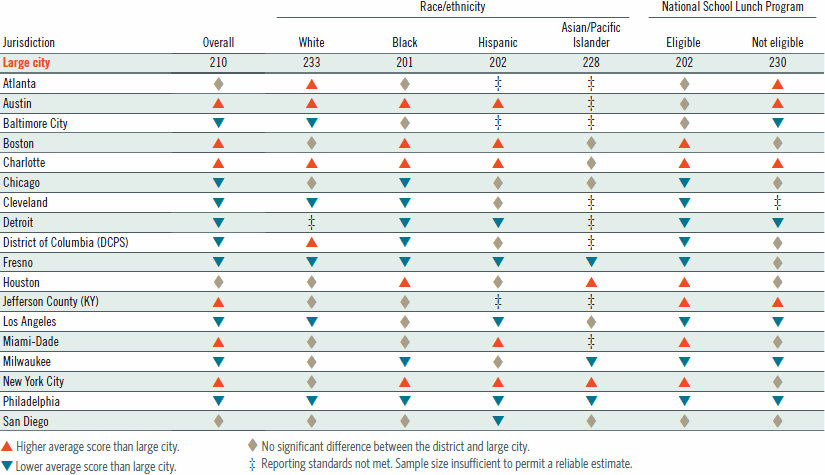 Differences in overall average scores in 2009 between participating districts and large cities sometimes varied when results were examined for student groups.
Differences in overall average scores in 2009 between participating districts and large cities sometimes varied when results were examined for student groups.
- Among the six districts where overall average scores were higher than the score for large cities, only Austin showed higher scores for all the racial/ethnic groups with samples large enough to report results.
- In eight of the nine districts where overall scores were lower than in large cities, scores for students eligible for the National School Lunch Program were also lower than the score for eligible students in large cities.
Comparison of district and large city average scores for fourth-grade public school students in NAEP reading, by selected student groups: 2009

NOTE: Black includes African American, Hispanic includes Latino, and Pacific Islander includes Native Hawaiian. Race categories exclude Hispanic origin. The NAEP Reading scale ranges from 0 to 500. DCPS = District of Columbia Public Schools.
SOURCE: U.S. Department of Education, Institute of Education Sciences, National Center for Education Statistics, National Assessment of Educational Progress (NAEP), 2009 Reading Assessment.